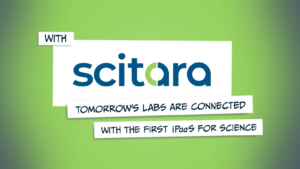At-a-Glance:
Scitara DLX can reduce analysis cycle times by:
- Ensuring RFT outcomes through manual test step elimination
- Eliminating second-person transcription and calculation verification reviews
- Shortening investigation duration where an assignable cause may be readily identified
Introduction
While it is well-established that automation can be implemented to reduce the potential for human error, many manual test steps still remain in a typical analytical laboratory. Often, errors in recording observed instrument readings, manual data transcription, and manual calculations are the root causes of suspect data and associated quality investigations or CAPA. Quality investigations can be time-consuming, involve many resources, and—until closed—prevent a disposition decision for the samples whose data are the subject of the investigation. Initial testing failures that lead to investigation and possible retesting will negatively impact cycle times.
A lab’s right-first-time record will improve and a lower risk to data integrity can also be realized by pursuing digital transformation, which is possible through DLX.
RFT Is Key to Short Cycle Times
Error prevention is an obvious means to achieve RFT testing and the shortest analysis cycle times. Eliminating manual steps also eliminates associated errors and their resulting investigations. In addition, improved error detection can simplify investigations that do occur where an assignable cause may be identified quickly.
DLX’s Role in Cycle Time Reduction
DLX can eliminate the great majority of manual readings, transcriptions, and manual calculations (for any calculations not already executed through the customer’s ELN, LIMS, etc.). This is achievable through a combination of configurable Scitara Connection and Orchestration technologies. Data from applications, web services, simple devices, and legacy devices may all be exchanged through Connections using an Orchestration. Each digital Connection contributes to minimizing or eliminating the possibility for errors where data are recorded automatically and where the output data of one or more devices becomes input to one or more different devices for processing and reporting. DLX makes this possible by creating true peer-to-peer bi-directional digital pathways over which instruments and applications may exchange data according to customer-defined business logic realized in workflow-specific Orchestrations. DLX is uniquely capable of fulfilling Pharma 4.0™ digitalization goals for product testing whereby no device or application is left behind in a lab’s digital transformation.
For example, an IoT- connected balance may eliminate potential manual recording errors by enabling an analyst to electronically record weights once the balance’s internal weight stabilization criteria have been met. These weight readings may then be sent to the analyst’s ELN or LIMS directly without the possibility for mistakes due to initial reading, recording, or subsequent transcription error. Further, those same weights may be transferred into a connected HPLC application’s run sequence file to be used in that system’s calculations for purity, potency, yield, etc. And in turn, the HPLC analysis results may be relayed into the lab’s LIMS. Because each DLX data exchange replaces a manual transcription, those exchanges do not require second-person verification once the lab’s workflows have been validated per their requirements.
Elimination of manual calculations also speeds analyses when replaced with a validated, automated alternative. DLX Orchestrations may include transform steps to perform calculations or reshape data “in flight”. This data is then suitable for use by a data consumer in a later Orchestration step.
There are cases where a manual reading is unavoidable, such as data from legacy devices like an analog gauge, which provides no connectivity whatsoever. Even then, data may be incorporated into a digital workflow. Using a Scitara DLX Universal Connector associated with that gauge, an analyst can record the gauge reading directly using a tablet or PC and send the data to an ELN, LIMS or another repository. To permanently substantiate the accuracy of the reading, the Connection may be configured to enable the analyst to include a photo of the gauge along with the reading. This enables a reviewer to verify the as-found reading at the time it was recorded. Such photographic evidence during an investigation could be used to prove or disprove the reading as a source of error. This may enable the investigation to conclude quickly thereafter or to enable it to look elsewhere once those data have been eliminated as the root cause for suspect data.
Impact
DLX automates manual steps that can result in errors, rework, and investigations. This automation not only can ensure RFT execution, it can also eliminate certain time-consuming second-person reviews. DLX can also enable the capture of vital as-found observational data that can be useful in an investigation toward identifying an assignable cause. Combined, these DLX benefits can significantly reduce analysis cycle time. Cycle time reduction equates to reduced costs and greater efficiency or throughput capacity in a QC lab. For development labs, these gains can contribute toward a faster time to market for new therapies.
